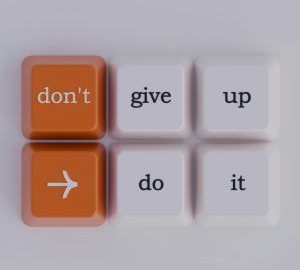(The following piece is by Dr. Carl R. Nassar, Ph.D., LPC, CIIPTS)
It’s a Tuesday morning. A world away, more than two hundred hostages are held captive in the underground caverns of Gaza. I’m in my office—an upstairs loft in the heart of Old Town in Fort Collins, Colorado—and I’m caught a little off guard when my client Paul tells me that he feels he’s also being held hostage. He explains that, of course, he’s not physically being held hostage, but rather, emotionally.
All around the world, he reminds me, on college campuses and on iPhones and tablets and laptops, anti-Semitism is on the rise. He pulls out his phone and shows me TikTok dancing to anti-Semitism, X tweeting out hatred toward Jews.
While the hostages in Gaza are trapped by external captors, Paul is held captive by his mind. TikTok and X and the daily news have convinced him his world isn’t safe. Even venturing to my office was risky business.
He tells me that when he leaves my office, people will see an imaginary Jewish badge pinned to his chest, like the star of David Nazis made Jews wear from 1939 to 1945. Everyone will know he’s Jewish, and something bad will happen to him. He might get beat up or killed. “The world is not a safe place anymore,” he declares.
He’s deeply troubled that more is not being done, that presidents and prime ministers around the world aren’t denouncing anti-Semitism, and those who are aren’t doing much more of it, more loudly.
He’s decided he’ll have to wait for the world to prove to him that it’s safe again. Until then, he’s certain he’ll be spending his time at home. He’s a hostage of his own making.
And he’s not alone.
Later that day, Anna sits down on the very same therapy couch. A world away, Northern Gaza is being bombed. The news clips show exploding buildings, overrun hospitals, and children wounded and alone and crying. They display graphs tallying the dead. “There are twelve thousand in total”, Anna explains, “and of those twelve thousand of my people who’ve been killed, eight thousand are women and children.”
She tells me the very same thing Paul told earlier that same morning. The world isn’t a safe place. When Americans peacefully protest the murder of twelve thousand civilians, they’re called terrorists. They’re called anti-Semitic.
Anna tells me that, when she walks down the street, people know she’s Arab. Somehow, they just know. Maybe it’s her olive-colored skin, she postulates, or her dark eyes, or her black hair, or all of it put together. After all, being a Christian Arab, she doesn’t wear a hijab, but, somehow, people still know.
I ask how she can tell, and she tells me it’s the way passersby look at her—the hate she sees in their eyes. Like her fellow Arabs in Northern Gaza hunkering down in the basements to keep safe from the bombs, she’s preparing to hunker down in her small apartment and lock herself in, hoping she can one day safely return to the world.
Just like Paul, she wonders, where are the world leaders? When will someone show up to bring an end to what will soon amount to a genocide of her people? Where are all the brave people in this world?
And, with that last question, I recognize what both Paul and Anna need. They’re fantasizing about someone outside of themselves being brave, brave enough to bring an end to the fighting and the hatred. But what they need is a different sort of bravery, the courage to attend to the fears and the sorrows living inside of them.
I can help each of them, beyond their wishes to end to the suffering they see in the world. They need help attending to the suffering, fear, anger, and the sorrow that have made a home in their hearts.
For Anna and Paul, this is not a time for action, not yet, because history tells us, time and again, that acting from emotionally wounded spaces makes things worse, not better. So we’ll start, instead, with care. I’ll help them feel safe—safe enough to allow their strong feelings to come out. And when those feelings begin to emerge, I’ll encourage them to let them out completely.
This won’t be a one time deal. It will be an ongoing journey of looking at the world as it is, opening up to it, letting the pain in, and letting the feelings out. What they’ll discover in this process of release and letting go will surprise them. They’ll discover a compassion, first for themselves in their suffering, and then for everyone who is suffering.
From this place of emotional clarity and strength, Paul and Anna, and you and I, can find the courage to be a part of the world and meaningfully contribute to it, helping in the small ways we each can. To rephrase a famous line from Margret Mead, “Never doubt that a thoughtful, committed individual can change the world. In fact, it’s the only thing that ever has.”
—
Dr. Carl R. Nassar, Ph.D., LPC, CIIPTS, is an award-winning professional counselor specializing in the impact of culture on our personal, family, and professional selves. His upcoming book, Born for a Better World, addresses the challenges and pressures that manifest in our shared consumer-driven world and the isolation that can result.
The post I’m a Therapist. Here’s what Happened the Day I Met with Both an Arab and a Jew. first appeared on Love And Life Toolbox.








Recent Comments